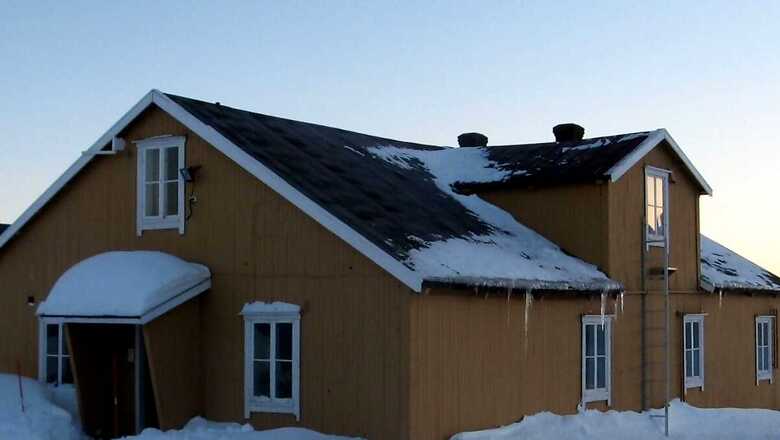
views
Over 15 years after Indian scientists first set foot on the Arctic Circle, they have embarked on another critical expedition near to the North Pole, this time to explore the frigid land during the most challenging time of the year — winter.
India’s first-ever winter expedition to the Arctic is led by four scientists including a woman who will be based at the country’s Himadri research station in Ny-Ålesund for a month to collect a treasure trove of observations. “We have undertaken several summer expeditions to the Arctic since 2007. But this is the first time that our team will be there during winter too,” says Thamban Meloth, Director, National Centre for Polar and Ocean Research (NCPOR), Goa.
The arduous mission was in the planning stage for the last three years due to daunting logistical constraints, but all decks were cleared this year. The team of four selected from NCPOR, Goa, Raman Research Institute (RRI), Bangalore, Indian Institute of Tropical Meteorology (IITM), Pune, and Indian Institute of Technology (IIT), Mandi were also aboard Norway’s ice-breaker RV KronPrins Haakon, which set sail to the North Pole in summer early this year.
India’s summer expeditions to the Arctic are restricted to a small area around Svalbard — Ny-Ålesund — about 1,000 km away from the North Pole, and where research institutes from over 10 countries have laboratories. “This is just our starting point. Now, the target is to make observations all through the year at Ny-Ålesund and eventually expand this area of observations to Greenland and the Canadian Arctic,” Meloth told News18.
WHAT WILL THE TEAM STUDY?
Winter can be exceptionally harsh in the island of Svalbard, where temperatures drop to as low as −25 °C and the region gets cloaked in darkness for weeks. But this is also the best time to collect observations, which are unique to winter polar nights.
The team is carrying as many as 15 scientific projects on board and plan to study the radio-wave signals from outer space as well as the atmospheric aerosols and their role in polar climate. They also want to dig more into the changing precipitation and atmospheric patterns of the Arctic.
As climate change drives a sharp rise in global temperatures, it has also triggered some irreversible changes in the polar regions, which scientists are keen to investigate. The unprecedented ice-loss is altering the global atmospheric systems and intensifying the weather extremes, especially the Indian summer monsoon. More ice-melt also means intense heatwaves and sea-level rise, scientists warn.
The average temperatures in the Arctic have risen by nearly 4℃ over the last 100 years, with localised warming up to 7℃ near Svalbard. The Arctic sea-ice extent is declining at a rate of 13% per decade, which has altered the weather and climate dynamics across the world, especially the jet streams. What happens in the Arctic influences the weather and climate across the globe, and its impacts are more profound in tropical regions like India.
The pristine land also offers unique opportunities for scientists to study how marine life is evolving in wake of global warming. The study of atmospheric aerosols is another important area for its increasing role in driving climate change. Arctic permafrost stores large amounts of Methane, a greenhouse gas that contributes to warming. When it thaws, it releases Methane.
YEAR-ROUND PRESENCE NEAR NORTH POLE
India began its polar exploration with the first-ever expedition to Antarctica in 1981, and Arctic in 2008. Starting January next year, the country will look to achieve a year-long presence at both the regions — at the Himadri research station in the Arctic region, as well as Antarctica near the South Pole where it already has two fully functional research stations.
“The Arctic and the Antarctic are very crucial from the point of view of climate study. In this maiden winter expedition, our scientists are poised to unravel further mysteries and push the boundaries of scientific knowledge about our ‘Climate & Planet’,” said Earth Sciences Minister Kiren Rijiju as he flagged off the expedition on Monday. “Our ministry has decided to make Himadri (India’s station in the Arctic) fully functional throughout the year. By the time this team returns, the next team will be ready for their journey ahead”.
The government had also unveiled the Arctic Policy last year with plans to set up more research stations and satellite ground stations in the Arctic region.
















Comments
0 comment